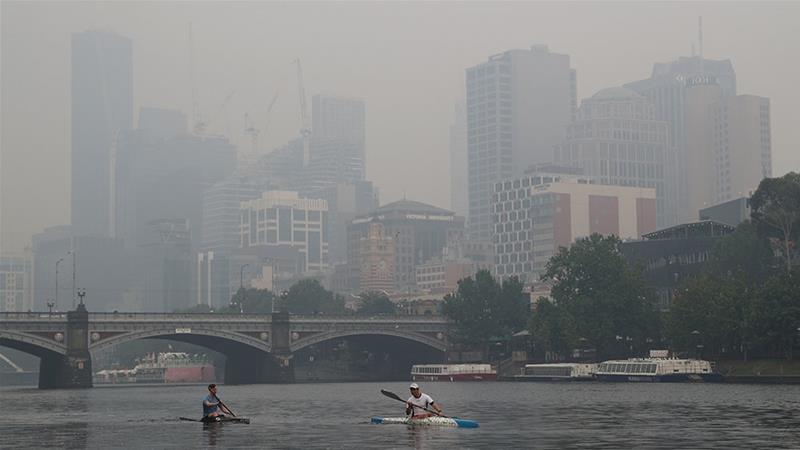Australia’s second city of Melbourne was shrouded in hazardous smoke from the country’s raging bushfires on Tuesday, as scientists warned massive blazes could become routine unless more was done to reduce the greenhouse gas emissions driving global warming.
At least 180 fires continued to burn across Victoria and New South Wales (NSW) states, with about 20 yet to be contained in NSW, Australia’s most populous state.
In Victoria five fires were at the ‘Watch and Act’ advice warning, one level below emergency status, authorities said.
“I wish I could say this was over, but we have a long way to go. We’ve got the smoke in our communities at the moment and it is at very poor or hazardous levels,” Lisa Neville, Victoria’s emergency services and police minister told a media briefing.
Australia’s bushfires devastate native wildlife population
The start of qualifying matches for the Australian Open were delayed by 90 minutes and practice suspended, after air quality deteriorated to ‘hazardous’ levels overnight.
“Conditions onsite are improving and are being constantly monitored,” Tennis Australia said in a statement.
“Further decisions will be made using onsite data and in close consultation with our medical team, the Bureau of Meteorology and scientists from EPA Victoria.”
Although Australia’s government and parts of its media have attempted to downplay the role of man-made climate change in making the country more vulnerable to wildfires, an academic review of 57 scientific papers published since 2013 has indicated there are clear links.
“We’re not going to reverse climate change on any conceivable timescale. So the conditions that are happening now, they won’t go away,” Richard Betts, Head of Climate Impacts Research at Britain’s Met Office Hadley Centre, who co-authored the review, told a news conference in London on Monday.
The review found that climate change had led to an increase in the frequency and severity of what scientists call “fire weather” – periods with a high fire risk due to some combination of hotter temperatures, low humidity, low rainfall and strong winds.
Australia has been suffering from drought for years, and 2019 was not only the driest year ever-recorded, but also the hottest.
Source: Al Jazeera






 WhatsApp us
WhatsApp us 

